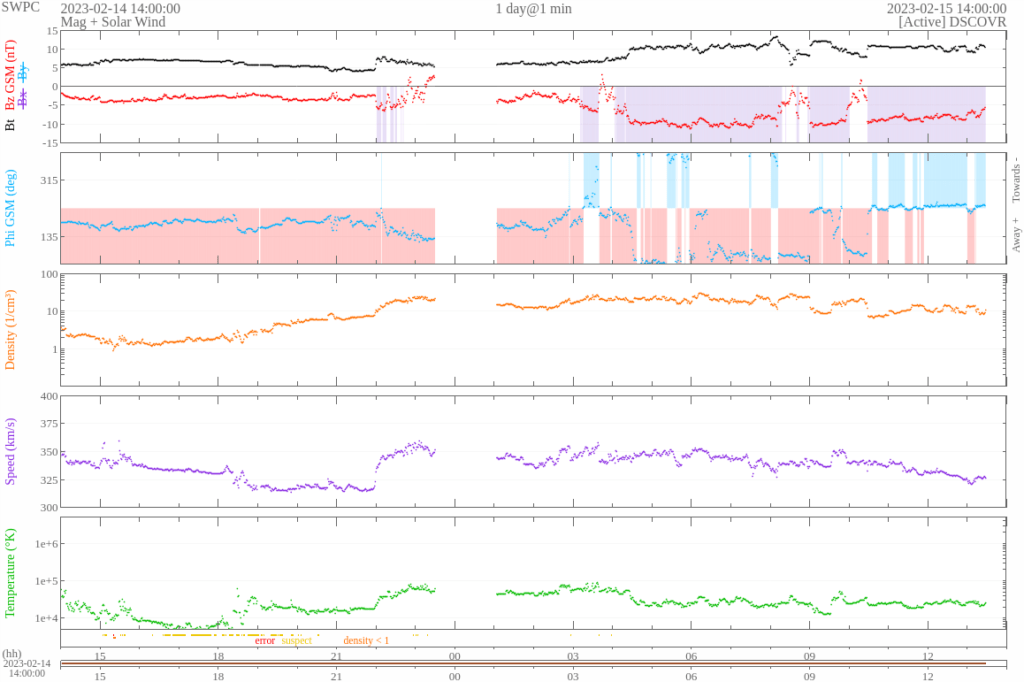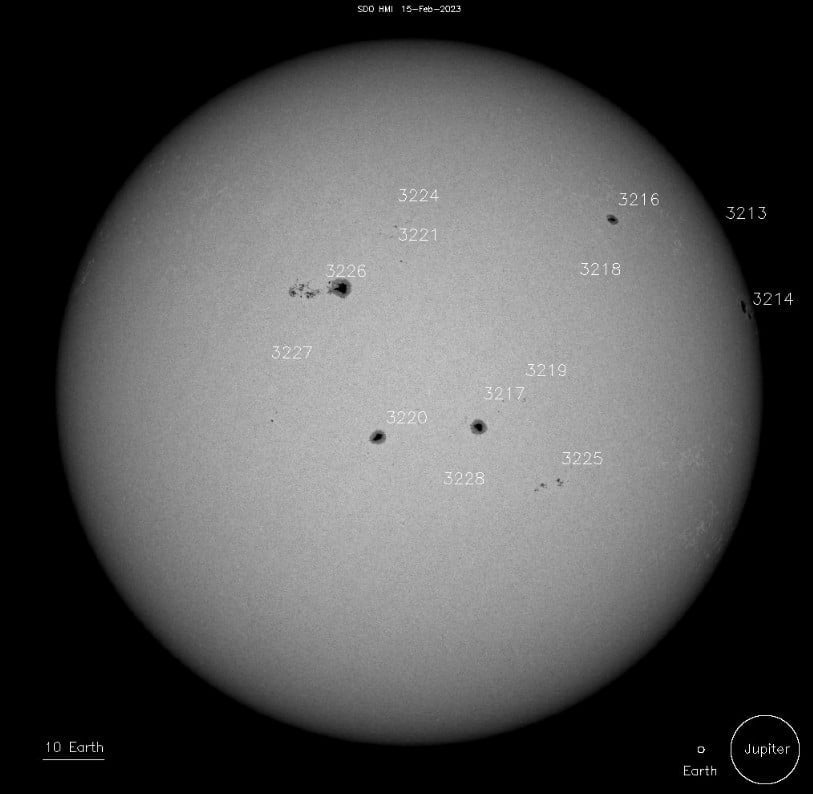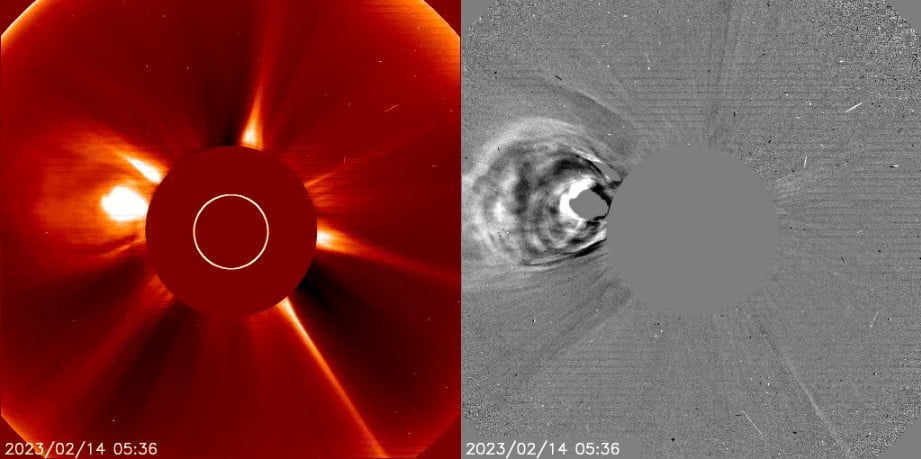Earth hit by slow-moving CME, triggers G1-Minor geomagnetic storm; second CME on the way

A slow-moving coronal mass ejection (CME) that left the sun on February 11, 2023, reached our planet today, causing G1 – Minor geomagnetic storming. A partial halo CME, possibly triggered by a filament eruption near Region 3220 on February 14 is forecast to impact Earth this week, which could result in disruptions to communication networks, power grids, and satellites. The timing and extent of the impact are still being analyzed.
Solar wind parameters, as measured by the DSCOVR spacecraft, were reflective of slow-moving CME influence in 24 hours to 12:30 UTC on February 15, 2023.
Total field strength was elevated through the period and reached 13 nT while Bz was oriented south and underwent prolonged sustained periods near -10 nT. Solar wind speeds hovered near 350 km/s and Phi was predominantly positive.
Continued enhancements in the IMF are expected through the rest of the day with ongoing CME influence. A mostly ambient-like state is expected on February 16 and 17.
Due to CME influence, the geomagnetic field reached G1 – Minor storm levels at 08:25 UTC today. The area of impact was primarily poleward of 60 degrees Geomagnetic Latitude. Under G1 conditions, weak power grid fluctuations can occur, minor impact on satellite operations is possible and aurora may be visible at high latitudes, i.e., northern tier of the U.S. such as northern Michigan and Maine.
Isolated active to G1 levels are still possible on February 15 with effects from the aforementioned CME.
Mostly quiet conditions with the chance for unsettled periods are expected on February 16 and 17.

Solar activity was at moderate levels during the same period, with Region 3213 driving most of the activity as it rotated beyond the western limb.
The region produced the largest flare of the period – an M2.6 at 12:12 UTC. Meanwhile, Region 3226 (beta-gamma) continued to mature, maintaining a gamma configuration in its intermediate spots. Region 3214 (beta), on the other hand, journeyed to the western limb, unleashing several C-class flares along the way. Region 3225 (beta) showed some minor growth with a few trailing spots, but was otherwise unremarkable.
Of the remaining nine active regions, some remained stable while others exhibited signs of decay.

At around 02:00 UTC today, a partial halo coronal mass ejection (CME) was detected in SOHO LASCO C2 imagery. The CME appears to have been triggered by a filament eruption near Region 3220, accompanied by a dimming in the area north of the region visible in SDO/AIA 193 imagery.
Early indications suggest that the CME is likely to hit Earth, potentially disrupting satellites, power grids, and communication networks. The timing and extent of the impact are still being analyzed.

Moderate solar activity is expected to continue, with a possibility of isolated to occasional M-class flares until February 15.
There is also a slight chance for an isolated X-class flare until Region 3213 fully rotates to the western limb. The likelihood of such events decreases slightly from February 16 to 17, with just a chance for isolated M-class flares.
References:
Forecast Discussion – Issued: 2023 Feb 15 1230 UTC – Prepared by the U.S. Dept. of Commerce, NOAA, Space Weather Prediction Center
Featured image credit: The Watchers (stock )

Commenting rules and guidelines
We value the thoughts and opinions of our readers and welcome healthy discussions on our website. In order to maintain a respectful and positive community, we ask that all commenters follow these rules.